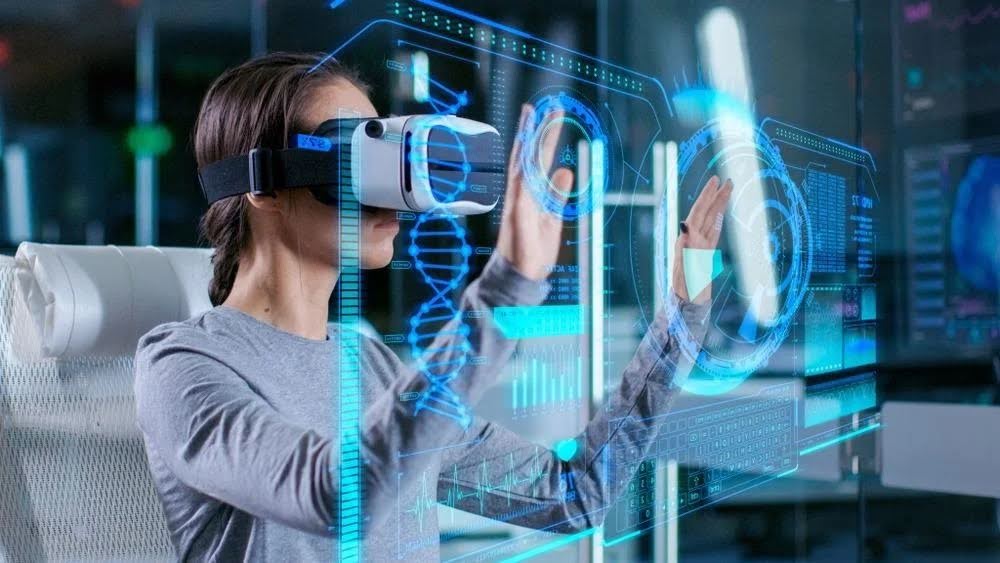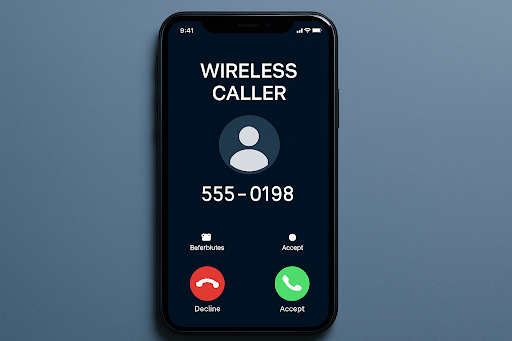
Modern technology allows users to try sunglasses anywhere at home and view furniture arrangements through virtual Reality without purchasing anything. This method appears to stem from the advanced technology of the future. Augmented Reality in Retail at present transforms shopping into a different experience.
The boundaries that limited Augmented Reality in Retail to video games and science fiction have disappeared. The retail sector puts AR in the spotlight, so the consequences are highly beneficial. Major brands globally implement this technology to design interactive shopping experiences that personally serve customers while generating exciting new sales possibilities.
The applications of AR technology in retail operations include the specific approaches brands currently use. In this write-up, we look at technological evolution in retail.
What Is Augmented Reality (AR), Really?
Augmented Reality (AR) is a technology that blends the digital and physical worlds by overlaying virtual content—such as images, sounds, animations, or 3D models—onto real-world environments in real time.
Then, we must revisit the fundamental principles of AR before understanding its applications in retail by retailers. Devices utilize augmented reality technology to display digital content featuring pictures, sounds, or three-dimensional models onto actual world views through camera operations. Compared to Virtual Reality (VR), which generates a completely digital reality for users, Augmented Reality works directly on the current physical environment. Most likely, you have used AR without recognizing its presence.
Why Retailers Are Loving AR
Modern shopping behaviors have transformed extensively since the turn of the decade. Modern customers seek fast shopping combined with brand trust and strong relationships with the brands they buy from. AR delivers on all three. The shopping experience enables customers to test products before making their purchases through augmented Reality so they can make more confident decisions.
The technology improves customer connections and decreases product returns through its interactive design, which traditional shopping does not offer. Brands achieve higher customer conversion rates while building trust through interactive, memorable journeys with their buyers using AR technology. Both parties achieve satisfying outcomes from this situation.
How Big Brands Are Using AR to Sell Smarter
Let’s take a look at how some of the world’s biggest and most innovative brands are using AR to elevate the shopping experience and drive revenue.
IKEA – Place Before You Pay
IKEA allows users to view their furniture through augmented Reality within their homes by using the “Place” mobile application. Through the app, users can easily determine whether their bookshelf will fit beneath household stairs and test which couches would harmonize with their existing décor. The application results in fewer merchandise being returned and enhanced purchasing ease.
Sephora – Virtual Makeup Try-On
By using facial recognition, the AR-powered Sephora app enables customers to test different makeup products virtually. Users can examine the appearance of various lipstick types together with eyeshadow shades and foundation through the application’s face-matching system. The program generates product suggestions that match user tones along with personal preference criteria.
Nike – Perfect Fit with AR Sizing
Using AR technology, Nike provides consumers with a foot scanning tool that helps them find the shoe size that matches their specific foot shape. The new innovation removes the need for returns because of different sizes while offering personalized shopping experiences.
Warby Parker – Try-On Glasses from Home
Customers can experience how different frames would fit their appearance through smartphone camera-based AR solutions from this eyewear company. Users experience an enhanced shopping experience through real-time frame try-ons, which improve their purchase confidence.
L’Oréal – AR-Powered Beauty Shopping
L’Oréal bought ModiFace, which operates as a leading AR firm that boosts online and retail shopping experiences for customers. Customers can predict how hair color and makeup appearances, along with skincare effects, would appear before purchasing, thanks to AR technology.
In-Store AR Experiences: The Best of Both Worlds
Retail operations in physical stores continue to thrive, while Augmented Reality in Retail technology creates a digital interactive element that enhances the customer experience. Certain retailers apply virtual trying technology through smart mirrors so customers can virtually see different outfits along with modifications to colors automatically.
The system allows the wearer to view alternative accessories without physically changing their clothing. Retailers use AR wayfinding to guide shoppers as they move through big stores by pointing them to the exact locations of items. Customers today can use their smartphone cameras to read product information because they allow them to view instructional videos alongside customer evaluations and production footage in real-time.
Data reveals that approximately fifty-six percent of consumers choose stores that implement AR features because technology improves real stores instead of eliminating their presence.
AR for Social Shopping: Enter Instagram and Snapchat
Retailers have found social media to be a new platform where AR technology supports their operations. Brands implement Instagram and Snapchat platforms to deliver AR capabilities to their social media followers through interactive and entertaining features. The visual tools on Instagram enable users to apply virtual products before they can immediately purchase them.
The AR effects on Snapchat act as promotional tools to engage users with the latest product introductions. Because of this approach, businesses create more engagement and boost impulsive buying habits among Gen Z readers and millennials.
Final Thoughts: Try It, Buy It, Love It
Through virtual product demonstrations, both for makeup selection and furniture evaluations, every shopper now becomes a believer who transitions from casual web browsing to finding their ideal purchase.
The application of this technology gives shoppers access to enhanced shopping experiences along with increased empowerment through convenience and both control and assurance. Retailers and customers alike understand that Augmented Reality in retail will maintain its status as an industry staple, which will only get better in the future.
FAQ
What’s the difference between AR and VR in retail?
AR enhances the physical environment by introducing digital components, which include virtual fittings and retail floor guidance systems. VR generates an entirely immersive digital space through its 360-degree virtual store method.
Is AR expensive for small businesses?
Not necessarily. Various modern tools enable small businesses to deliver interactive augmented Reality (AR) features at affordable costs and user-friendly operations.
How does AR reduce return rates?
Customers become able to make better purchasing choices through AR and experience fewer surprises about their products at delivery, which reduces return rates.


